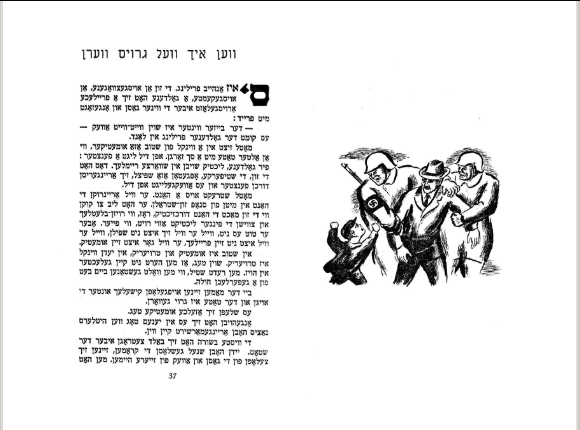Oct 15, 2019

Image from M. Shifris, Foygl Kanarik un andere mayses. (New York: Mosheh Shifris bukh komitet, 1950).
INTRODUCTION
In an effort to pool the wisdom and experience acquired by our contributors’ work in the classroom, In geveb regularly polls Yiddish instructors on topics related to Yiddish pedagogy. In our Loyt Di Lerers series, we compile ideas and best practices for teachers who teach Yiddish, teach about Yiddish, and teach with texts from Yiddish sources. The responses to these polls offer a cross-section of the opinions, approaches, and experiences of Yiddish instructors from Los Angeles to Tel Aviv, from children’s programs to university classes to continuing education courses, from new teachers to those with a lifetime of experience.
In our Loyt di Lerers series we have gathered teachers’ thoughts about Yiddish textbooks, focused on the question of whether and how to use Weinreich’s College Yiddish, asked teachers to describe how they conduct the first day of Yiddish class and what their strategies are for the Intermediate Yiddish classroom, learned how instructors teach with texts translated from Yiddish, asked Holocaust educators how they teach with and about Yiddish, and learned about Yiddish clubs and reading groups.
This summer, YIVO organized a teachers’ seminar, led by Miriam Trinh and Eliezer Niborski dedicated to discussing issues of Yiddish language pedagogy. While every day of the seminar provided extremely rich food for thought - ranging from “How and when do we teach our students to use dictionaries and which dictionaries?“ to “How can we instruct our students in correct Yiddish handwriting?“ - It was in particular the question of “How and when do we teach khurbn materials in our language classes?“ that struck a nerve among participants. Two common responses to the question were, on the one hand, a hesitation to inadvertently confirm a stereotype of Yiddish as being exclusively a “dead” Holocaust language, and, on the other hand, a deep commitment to showcasing the connection of Yiddish as a language of Holocaust literature, testimony, and scholarship. If you teach Yiddish language classes, we invite you to participate in our short survey to help us learn more about your approach to teaching the khurbn.
Thank you for sharing your thoughts and experiences with the In geveb teaching community. Please note that you don’t have to answer every question in order to participate. Choose the questions you find most relevant - we appreciate any thoughts, ideas, or information you are willing to share.


